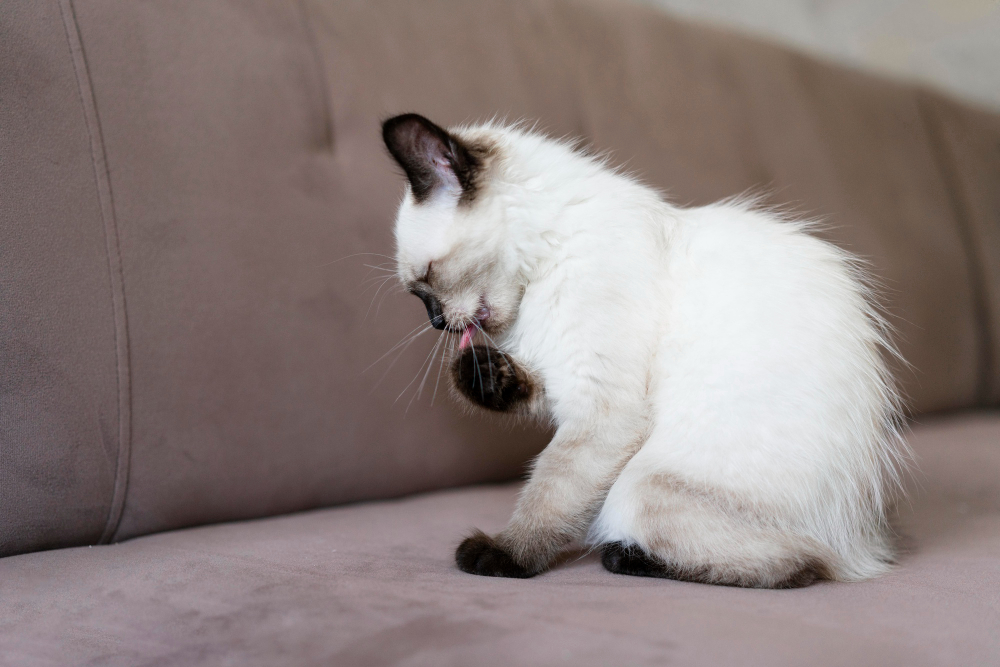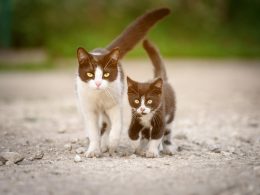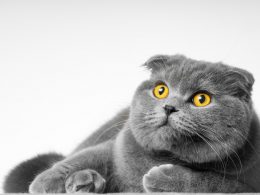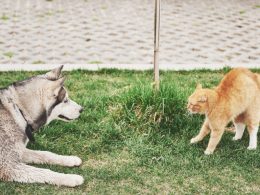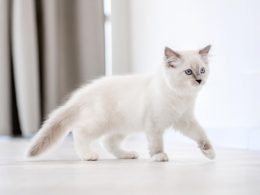Hairballs, or trichobezoars, are a common occurrence in cats. While often harmless, they can sometimes lead to significant health issues. This article delves into the intricacies of hairballs in cats, exploring what they are, how to identify problems, the main causes, and effective prevention strategies.
What Are Hairballs and Why Do Cats Produce Them?
Cats are known for their meticulous grooming habits, spending nearly a quarter of their lives cleaning themselves. Their tongues, uniquely textured, act as a natural brush, removing dirt and loose hair. Saliva aids in this process, but it also leads to the ingestion of hair, forming trichobezoars.
These hairballs, a combination of hair, saliva, gastric juice, and sometimes food, are usually expelled through regurgitation or feces. It’s a natural physiological process, but when elimination fails to occur, it can escalate into a serious problem.
Identifying Hairball Problems in Cats
Recognizing when hairballs become an issue is challenging, as their formation is a natural part of a cat’s physiology. However, owners should be vigilant about the frequency of hairball expulsion. Symptoms to watch for include:
- Abdominal discomfort
- Vomiting without trichobezoar elimination
- Diarrhea or dry stools
- Lack of appetite
- Apathy
If these signs are observed, and the hairball has not been expelled, immediate veterinary attention is required. A veterinarian can provide proper treatment and, if necessary, perform procedures to remove the hairball.
Main Causes Leading to Hairball Formation
Beyond natural grooming habits, several factors can exacerbate hairball formation:
- Skin Diseases: Dermatitis and allergies can lead to increased licking, causing more frequent hairballs.
- Stress: Anxiety and stress can also increase hair licking, leading to more hairballs.
- Long Coat: Cats with longer hair are more prone to hairball formation.
- Malnutrition: Even seemingly healthy or overweight cats can be malnourished, losing more hair and leading to more hairballs. Proper nutrition is vital.
Preventing Excess Hairball Formation
While eliminating hairballs entirely is impossible, there are strategies to prevent excess formation:
- Regular Brushing: Introducing frequent brushing can prevent excess dead hair ingestion.
- Hydration: Encourage clean and fresh water intake to maintain hair health and minimize shedding.
- Physical Exercise: Stimulate your cat with activities to enhance body function, aiding natural hairball expulsion.
- Quality Diet: Invest in diets containing functional foods and nutraceuticals to speed up intestinal transit.
- Provide Grass: Cats enjoy eating grass, which facilitates intestinal transit. Consider growing corn grass for your cat.
- Flea and Tick Prevention: Avoid infestations that lead to excessive licking.
- Regular Veterinary Checkups: Routine visits to the vet can catch problems early.
- Environmental Cleanliness: A clean environment supports overall health.
Conclusion
Understanding and Managing Hairballs: Hairballs in cats, while a natural and often harmless phenomenon, can escalate into a serious health concern if not properly managed. The formation of trichobezoars is a complex process, influenced by factors such as grooming habits, skin conditions, stress, coat length, and nutrition. Recognizing the signs of a problem and understanding the underlying causes is essential for responsible pet ownership.
Prevention Strategies: Prevention is key in managing hairballs, and it requires a multifaceted approach. Regular brushing, proper hydration, physical exercise, quality diet, environmental enrichment, and routine veterinary care are all vital components in minimizing the risk. Tailoring these strategies to your cat’s specific needs can make a significant difference in their overall well-being and happiness.
A Holistic Approach to Cat Care: Ultimately, managing hairballs is part of a broader commitment to holistic cat care. It’s about more than just addressing a single issue; it’s about understanding your cat’s overall health and taking proactive steps to ensure a happy, healthy life. Regular communication with a veterinarian and a willingness to adapt and respond to your cat’s unique needs will foster a positive relationship and enrich the life of your feline companion.










